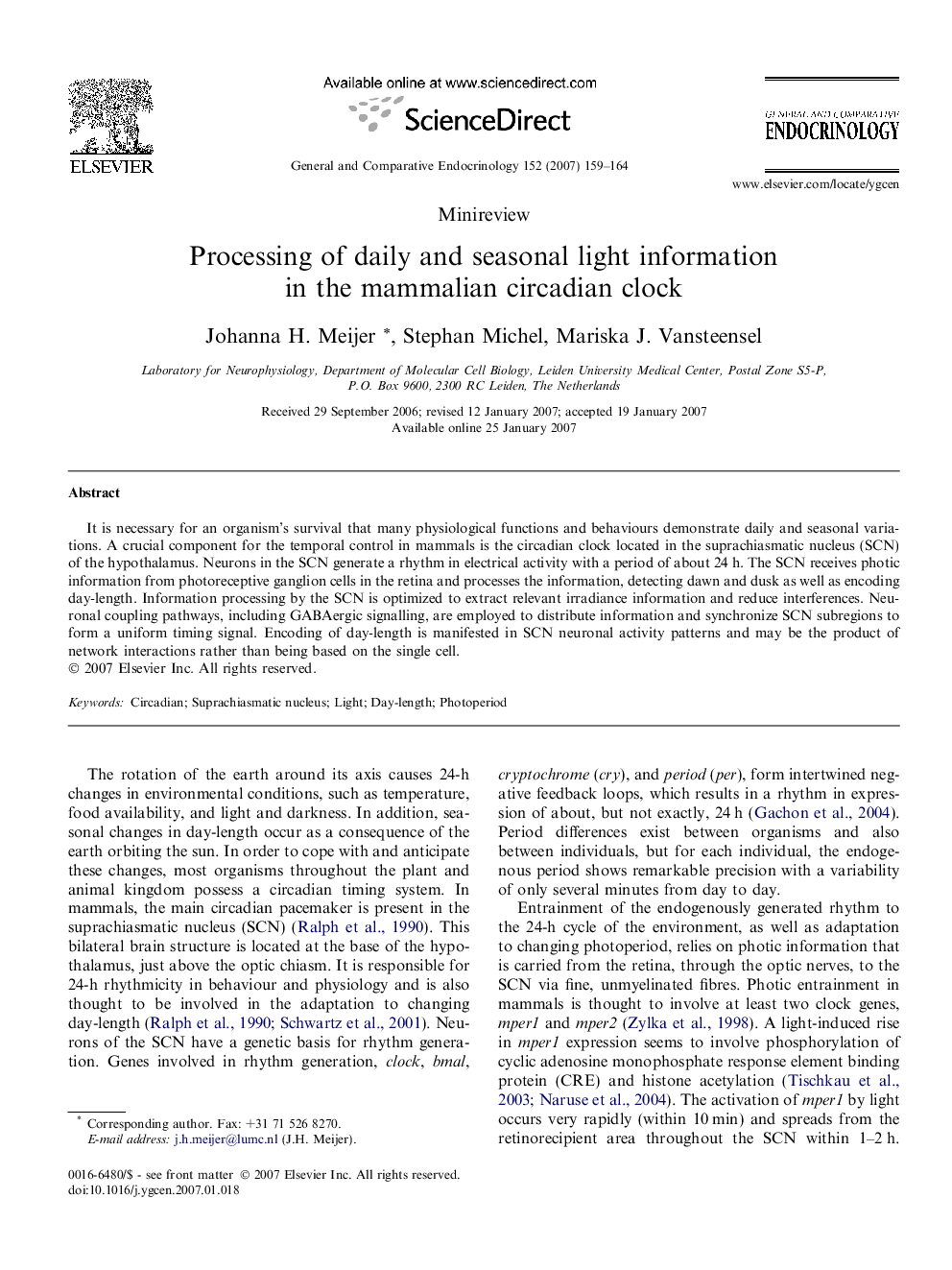| Article ID | Journal | Published Year | Pages | File Type |
|---|---|---|---|---|
| 2801939 | General and Comparative Endocrinology | 2007 | 6 Pages |
It is necessary for an organism’s survival that many physiological functions and behaviours demonstrate daily and seasonal variations. A crucial component for the temporal control in mammals is the circadian clock located in the suprachiasmatic nucleus (SCN) of the hypothalamus. Neurons in the SCN generate a rhythm in electrical activity with a period of about 24 h. The SCN receives photic information from photoreceptive ganglion cells in the retina and processes the information, detecting dawn and dusk as well as encoding day-length. Information processing by the SCN is optimized to extract relevant irradiance information and reduce interferences. Neuronal coupling pathways, including GABAergic signalling, are employed to distribute information and synchronize SCN subregions to form a uniform timing signal. Encoding of day-length is manifested in SCN neuronal activity patterns and may be the product of network interactions rather than being based on the single cell.
